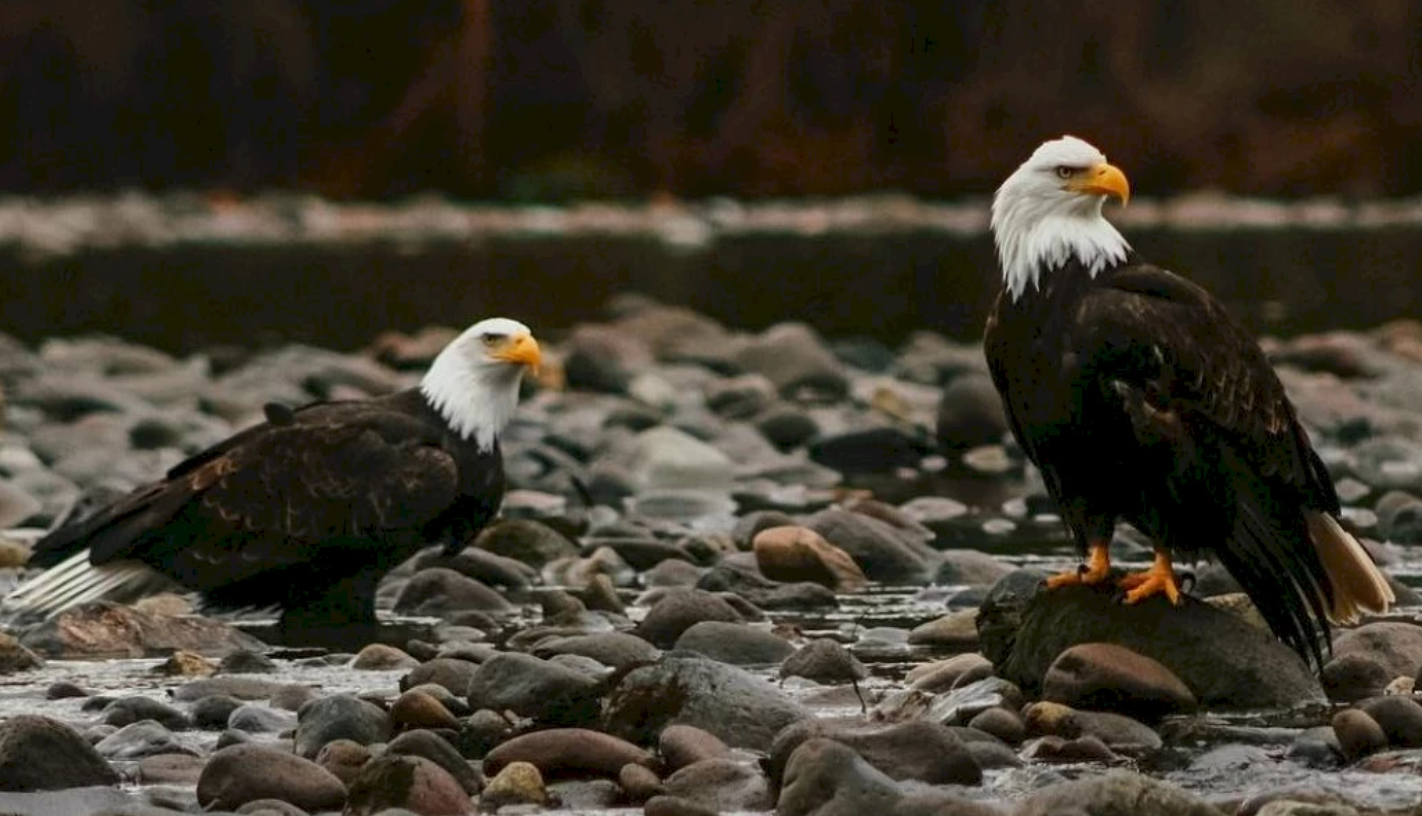
Every fall, Squamish becomes home to one of North America’s largest congregations of wintering Bald Eagles. In the first 3 weeks of October, 10,000 salmon make their annual journey upstream to spawn, attracting over 1,300 eagles to take shelter for the cold winter months and hunt for their favourite dish.
The Squamish Environment Society recently announced a successful annual eagle count, with 1,288 bald eagles counted, the highest count since 2007 and nearing the 38-year average of 1,318. It was on January 9, 1994 that a world record of 3,769 bald eagles were counted at the annual Brackendale Winter Eagle Count. Later, Thor Froslev of the Brackendale Art Gallery and friend Len Goldsmith conceived establishing an eagle reserve in Brackendale.
This is a great time to check out these majestic creatures and Tourism Squamish has a handy guide on making the most of this experience.
When to Look
The best time is early morning when eagles are searching for food after a long, cold night. The next best time is mid-afternoon, between 2:30 and 3:30 pm when eagles leave their feeding areas for their roosting spots to settle in for the night.
Where to Look
Eagles spend most of their time roosting in tall trees and here are two locations in Squamish where you can spot them.
Eagle Run Dyke: A great location for cell phone and camera photography, offering views across the river to Brackendale Eagles Provincial Park (no public access).
You can also visit the Tenderfoot Creek Hatchery. Open to the public seven days a week from 9 am to 3 pm, they are a great place to view the eagles and a variety of salmon species. They have public washrooms, picnic tables, and you can learn about Squamish salmon populations, their importance to the ecosystem and how they co-exist with eagles, as well as Tenderfoot’s involvement in the populations.
Be an Ethical Eagle Observer
Ethical eagle viewing ensures the Squamish eagles come back year after year. Follow these viewing practices to keep eagle populations alive and well.
Keep your distance: Do not approach an eagle you see feeding on the shore. An eagle forced to leave its food may not return to it, and it needs to conserve energy to survive the winter.
Do not use drones: Use binoculars or telephoto lenses to get a closer look.
Stay on the dykes: Please do not walk on the gravel bars or private land.
Keep dogs on a leash: Do not let dogs chase wildlife.

